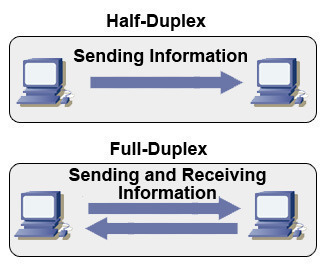
Half Duplex vs. Full Duplex: Differences, Characteristics & Benefits
Introduction to Half Duplex and Full Duplex Communication
In today’s world of communication, understanding how data is transmitted is crucial for ensuring smooth and efficient exchange of information. Two fundamental modes of communication, half duplex and full duplex, play a significant role in enabling the flow of data across various systems and technologies. These modes are commonly used in areas such as computer networks, telecommunications, and radio communications, forming the backbone of modern connectivity. Each mode has its own unique characteristics, applications, and benefits, which make them suitable for different scenarios.
In this article, we will take a closer look at both half duplex and full duplex communication, exploring their features, how they operate, where they are applied, and the advantages they offer in facilitating seamless communication. By understanding these two modes, you’ll gain insights into the systems that power the devices and networks we rely on every day.
What is Half Duplex Communication?
Half duplex communication refers to a method of data transmission where information can flow in both directions, but not simultaneously. In this mode, two communicating devices can send and receive data, but they must take turns doing so. When one device transmits data, the other device listens, and vice versa. Imagine it as a two-way street where traffic can move in either direction but not at the same time.
Characteristics of Half Duplex Communication:
- Bi-directional data flow, but not simultaneous.
- Devices take turns transmitting and receiving data.
- Increased latency due to wait times between transmissions.
- Lower data throughput compared to full duplex.
Applications of Half Duplex Communication:
- Walkie-talkies and two-way radios.
- Early Ethernet networks (10BASE5 and 10BASE2).
- Some wireless communication protocols.
Benefits of Half Duplex Communication:
- Simple implementation and lower hardware complexity.
- Suitable for scenarios with low data traffic and intermittent communication needs.
- Cost-effective for specific applications.
What is Full Duplex Communication?
Full duplex communication, on the other hand, allows data transmission in both directions simultaneously. It resembles a two-lane highway, where vehicles can travel in opposite directions without any hindrance. In this mode, devices can both send and receive data concurrently, enabling faster and more efficient communication compared to half duplex.
Characteristics of Full Duplex Communication:
- Simultaneous bi-directional data flow.
- Devices can transmit and receive data simultaneously.
- Lower latency and higher data throughput compared to half duplex.
- Requires more sophisticated hardware and communication protocols.
Applications of Full Duplex Communication:
- Modern Ethernet networks (e.g., 1000BASE-T, 10GBASE-T).
- Cellular networks (e.g., 4G LTE, 5G).
- Internet browsing and video conferencing applications.
- High-performance server-client communication.
Benefits of Full Duplex Communication:
- Faster data exchange, resulting in reduced waiting times.
- Ideal for real-time applications, such as voice and video communication.
- Greater efficiency and improved user experience in data-intensive scenarios.
The Comparison: Half Duplex vs. Full Duplex
Now, let’s compare the two communication modes side by side:
Data Flow:
- Half duplex: Bi-directional, but not simultaneous.
- Full duplex: Simultaneous bi-directional data flow.
Latency:
- Half duplex: Higher latency due to wait times between transmissions.
- Full duplex: Lower latency, allowing for real-time data exchange.
Data Throughput:
- Half duplex: Lower data throughput compared to full duplex.
- Full duplex: Higher data throughput, leading to improved efficiency.
Complexity:
- Half duplex: Simpler implementation and lower hardware complexity.
- Full duplex: Requires more sophisticated hardware and communication protocols.
Applications:
- Half duplex: Suitable for low data traffic and intermittent communication needs.
- Full duplex: Ideal for real-time applications and data-intensive scenarios.
Conclusion
In conclusion, both half duplex and full duplex communication play vital roles in enabling seamless data transmission across various technologies. Half duplex, with its straightforward implementation and cost-effectiveness, suits specific applications with low data traffic. On the other hand, full duplex, offering simultaneous bi-directional data flow and lower latency, is the preferred choice for modern high-performance networks and real-time applications.
Understanding the differences between half duplex and full duplex communication will empower you to make informed decisions when selecting the appropriate communication mode for your specific needs, ensuring optimal data exchange and efficient communication.